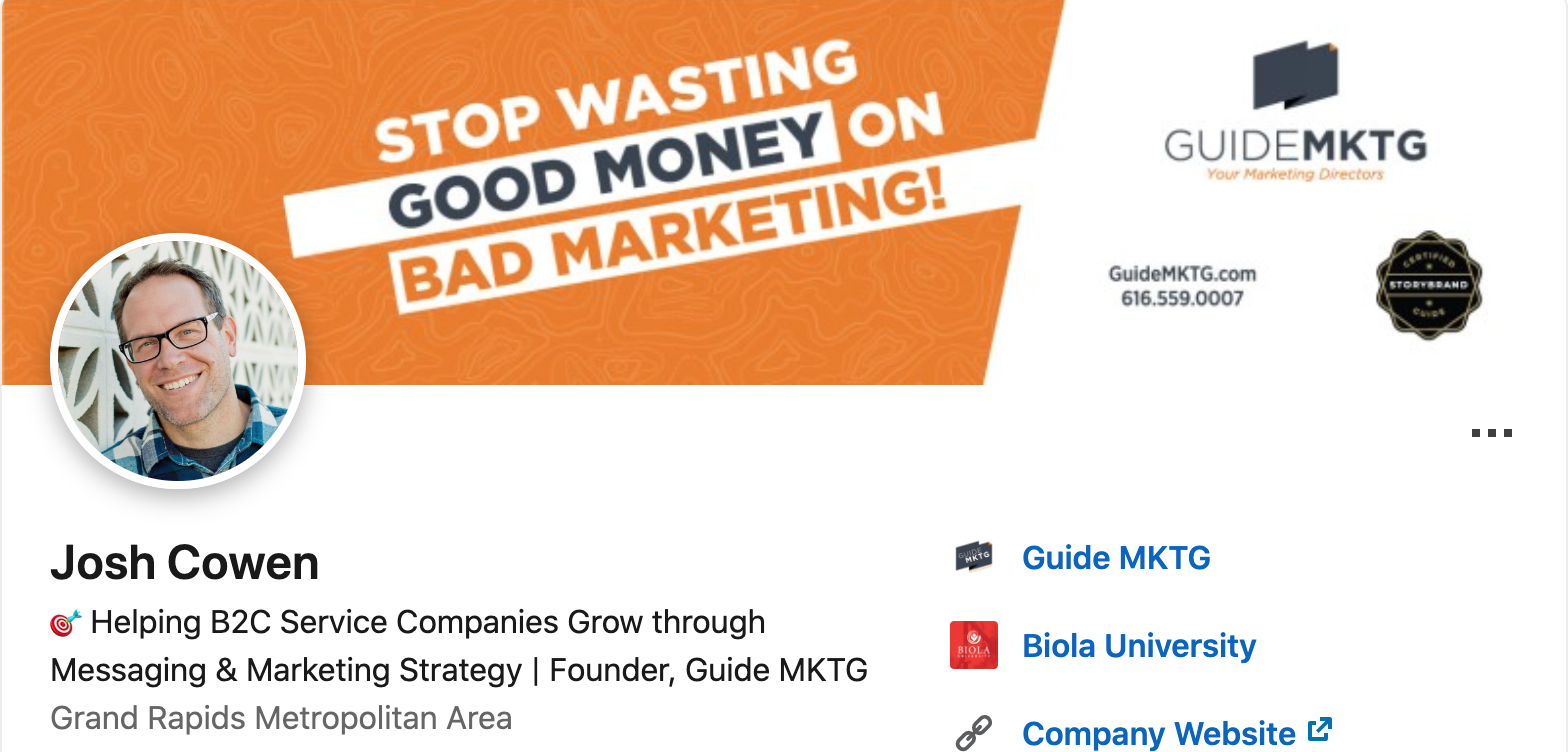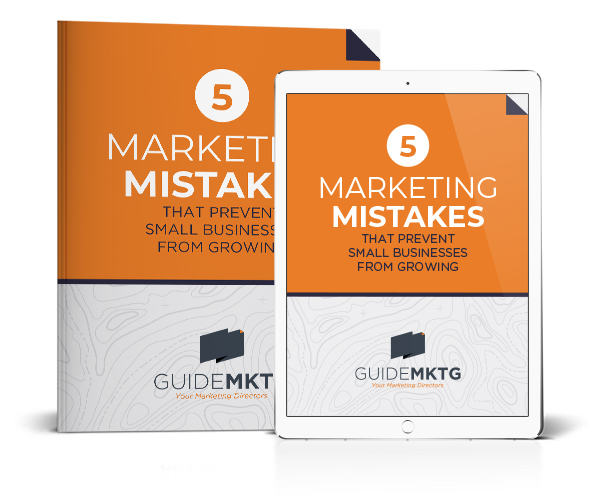With over 900 million users, LinkedIn is a powerful tool for small business owners to connect with other professionals and potential clients. Follow these four steps to learn how to use LinkedIn for small business marketing.
Step 1: Decide how you’ll use LinkedIn.
Although all business owners can benefit from a LinkedIn profile, not all businesses will use LinkedIn to generate leads in the same way.
Unlike other social media platforms, LinkedIn is mainly used for business networking, recruiting, and job searching. That means, if your business works with other professionals, LinkedIn should be a major part of your marketing strategy. It is the world’s largest professional network and the #1 marketing platform for B2B (business-to-business) companies.
However, if your target audience is consumers, especially if those consumers are kids, young adults, or stay-at-home moms, you probably aren’t going to generate sales leads on the platform.
Instead, you’ll use your LinkedIn company page to connect with other business owners and grow your professional network.
Step 2: Create a Compelling Profile
Once you know how you will use LinkedIn and who you are wanting to connect with, it is time to create (or polish up) your LinkedIn profile.
Think of your LinkedIn profile as your digital business card. It is the place potential partners, clients, and colleagues will go to learn more about your business. To make a great first impression, you need a great profile.
To craft a profile that stands out you need:
-A Professional Profile Picture
Your profile picture is often the first thing people see when they visit your LinkedIn page. To make a strong first impression, you’ll need a high-quality, professional photo.
Simply put, a professional photo makes you look more legit than a picture you haphazardly snapped at your cousin’s wedding. When you look like a successful business owner, people are more likely to believe you are a successful business owner.
To get a professional profile picture, follow these steps:
- Hire a Professional Photographer: If possible, hire someone who specializes in business headshots. They have the necessary skills and equipment to make you look your best.
Tip: If you can’t hire a photographer and have to go the DIY route for now, use these tips to get professional-looking results.
- Dress Professionally: Dress like you’re on your way to an important meeting or job interview.
- Choose the Right Setting: The background should be neutral and distraction-free. A plain wall, a blurred outdoor setting, or a professional backdrop are all good choices.
- Edit and Crop Appropriately: The photo should be clear, well-lit, and focused on your face. When you are cropping the photo to add it to your profile, make sure your face is in the middle of the circle frame LinkedIn uses for profile images.
-A Descriptive Headline
Next, you need to write your headline. This is the text that appears just below your photo. Your headline is more than just a job title — it’s an opportunity to highlight your brand and value proposition.
To create an effective headline:
- State What You Do: Use clear and concise language to explain your role or your business’s primary services.
- Highlight Your Value Proposition: What unique value does your business provide?
- Use Relevant Keywords: Incorporate phrases that people would look for to find professionals like you on LinkedIn. This ensures that your LinkedIn page shows up in related search results.
Your headline is essentially a mini elevator pitch. It’s a snapshot of who you are and what your business brings to the table.
For example, Josh’s headline is “Helping B2C Service Companies Grow Through Messaging & Marketing Strategy”. In just a few words you know who we work with, what we do, and how we do it.

-An Easy to Read About Section
The About section is where you tell your story on LinkedIn. In this section of your company’s LinkedIn page you get to show more of your personality, while also emphasizing your expertise, achievements, and what makes your business unique.
To craft an engaging about section:
- Start Strong: Grab the reader’s attention from the start with an interesting hook so that they will stick around and keep reading.
- Be Personable: Add some personality to your story. Remember, LinkedIn is for making connections, so you want to come off as someone other LinkedIn users will want to interact with.
- Highlight Key Achievements: List a few of your key professional achievements or accolades to boost your credibility. Use specific data and statistics if possible.
- Make it Visually Appealing: Instead of a big block of text, use bullet points or appropriate emojis to break up the information and make it easy to skim.
- End with a Call to Action: Tell people what you want them to do next, whether that’s connecting with you, visiting your website, or checking out your latest blog post.
Now that you’ve got your profile set up, you can start using it to harness the power of LinkedIn to grow your professional network and your business.
Step 3: Build Authentic Relationships
LinkedIn is meant to be a place to connect with like-minded professionals. However, the well-known “Please add me to your LinkedIn Network” emails aren’t the best way to meet someone new.
The problem is not the email itself but the fact that 9 times out of 10 a spam-like message follows. Instead of a message from someone wanting to get to know you, you open the email to find:
- A sales pitch
- Straight up spam
- “I saw you _____ and I happen to sell _____, which I’m sure you need.”
Instead of trying to lead with a sales pitch, take the time to get to know people and build authentic relationships with them. Comment on their posts, share their content, and engage with them.
You can also join LinkedIn groups or create your own LinkedIn group to connect with people who share your interests and goals.
If you have a mutual connection, ask them to introduce you. That way, when they see your name in a LinkedIn Network request, they’ll already know who you are. It won’t feel like spam but a genuine connection.
The true key to success using LinkedIn for small business marketing is building authentic relationships. That means you’ll need to play the long game and invest in those relationships over time.
Step 4: Share Useful, Relevant Information
This last step is a bonus for small businesses who truly want to harness all LinkedIn has to offer. Sharing content on LinkedIn posts can put you in front of a larger audience.
You can share business news, blog posts, podcasts, native videos, or even useful images to help build your authority as an expert in your field and attract more LinkedIn users to your profile.
However, as with any social media platform, your content should be relevant, informative, and add value to your target audience. That means, the kind of content you post on LinkedIn might not be the same as what you’d post on the rest of your social media.
Remember, these are fellow professionals. They aren’t coming to LinkedIn for funny videos and cat memes. Your content should be something other professionals will find helpful.
LinkedIn is not a one-size-fits-all platform. For some, just having an updated profile and taking the time to build connections will be enough for their business strategy. For other small businesses, posting relevant content will be the key to continued growth.
Decide which method fits your business model best and then use these 4 steps to strategically leverage LinkedIn to grow your business.
Get a Great LinkedIn Profile Without All the Writing
If you’d rather skip the whole profile writing piece and jump right to making LinkedIn connections, schedule a call with Guide MKTG today. We will work with you to develop clear company messaging so that you will know exactly how to explain your business to your target audience.
You can then use that same clear messaging on your LinkedIn profile and all your other small business marketing materials. Potential clients will finally understand exactly what you do, how you do it and why they need your business in their lives.





